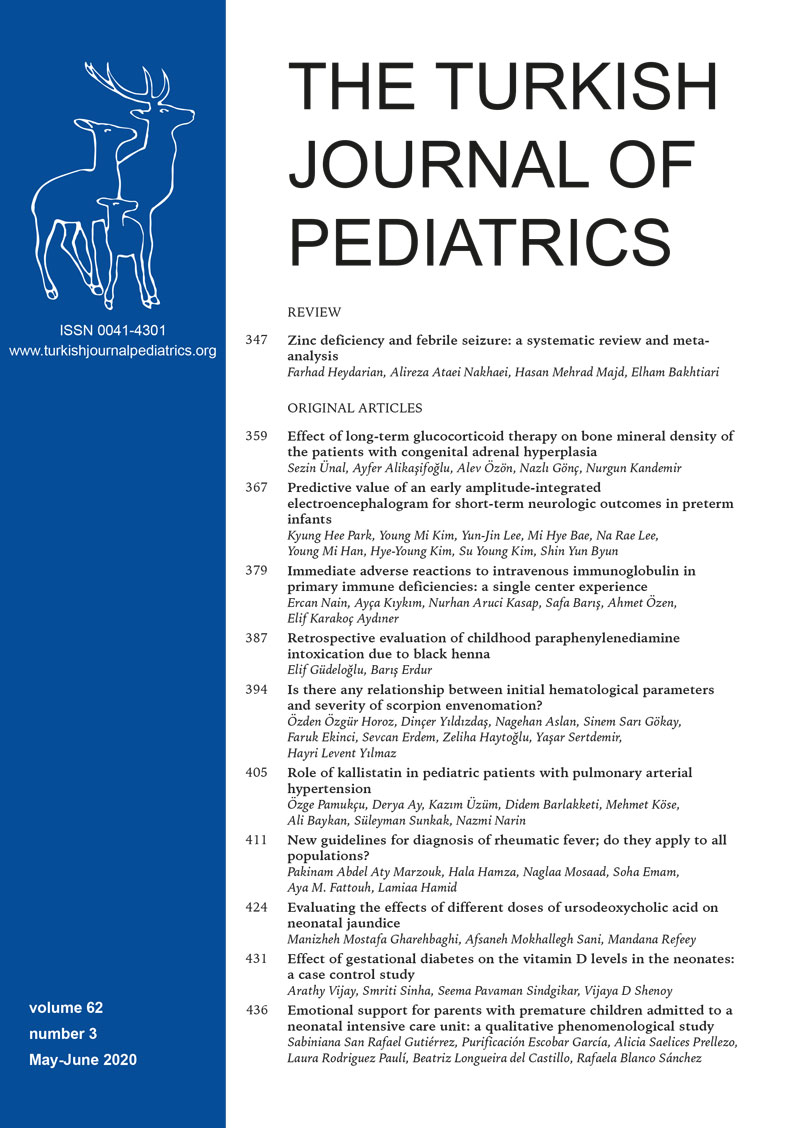Abstract
Background and Objectives. Most cases of severe scorpion envenomation occur in children and are associated with significant morbidity and mortality. Excessive systemic inflammatory response, which leads to multiple organ involvement, is an emerging challenge during severe envenomation. The aim of this study was to investigate if there was any relationship between initial hematological parameters and severe envenomation in pediatric patients presenting with scorpion envenomation.
Method. This study was performed retrospectively, at the pediatric emergency unit and pediatric intensive care unit of the Çukurova University Medical School in Turkey. Two hundred and fifty-seven cases with scorpion envenomation, and a control group consisting of one hundred and fifteen healthy children were included in the study.
Results. White blood cell, neutrophil, lymphocyte, platelet, neutrophil/lymphocyte ratio (NLR), platelet/ lymphocyte ratio (PLR) and PDW values of patients were higher than the controls (p < 0.05). Mean NLR was 3.8 ± 4.7 in patients. Patients were analyzed with the help of the decision tree model, and it was seen that in patients who had applied to hospital in less than an hour after the scorpion sting, 87.5% of the patients whose NLR value was between the 0.519-1.969 interval (below 2.1 which we found as the cut-off value) did not need to be hospitalized in the intensive care unit, 54.1% of the patients whose NLR value was higher than 1.969 needed to be hospitalized at the intensive care unit.
Conclusions. Severe envenomation is associated with mortality and morbidity in children. Our findings showed that NLR seems to be a useful tool in predicting severe envenomation.
Keywords: children, neutrophil/lymphocyte ratio, scorpion, severe envenomation
Copyright and license
Copyright © 2020 The Author(s). This is an open access article distributed under the Creative Commons Attribution License (CC BY), which permits unrestricted use, distribution, and reproduction in any medium or format, provided the original work is properly cited.














